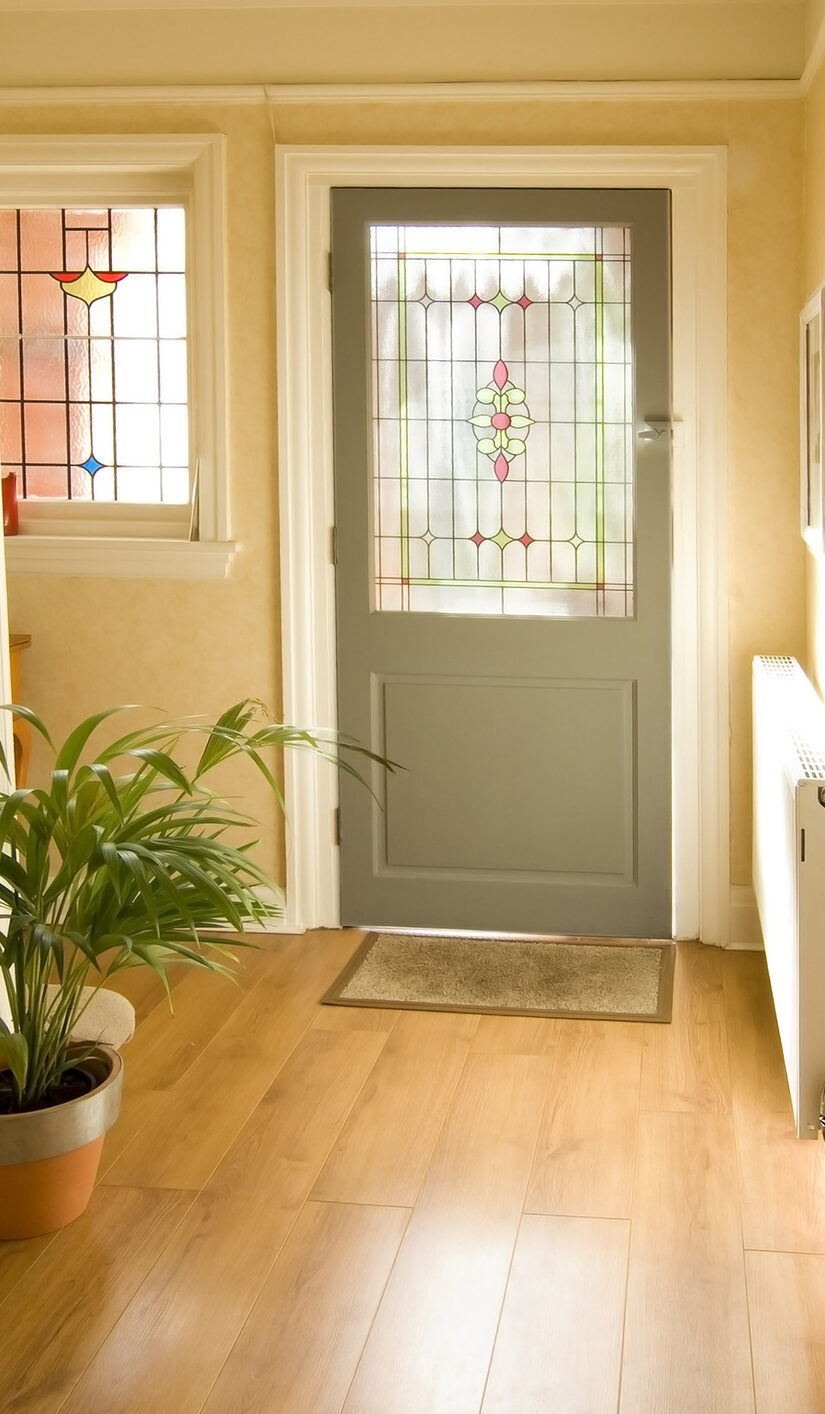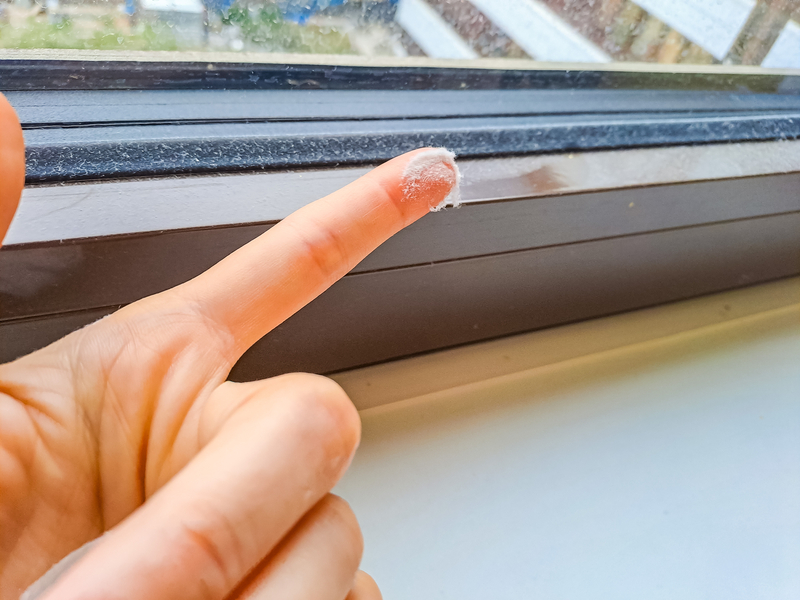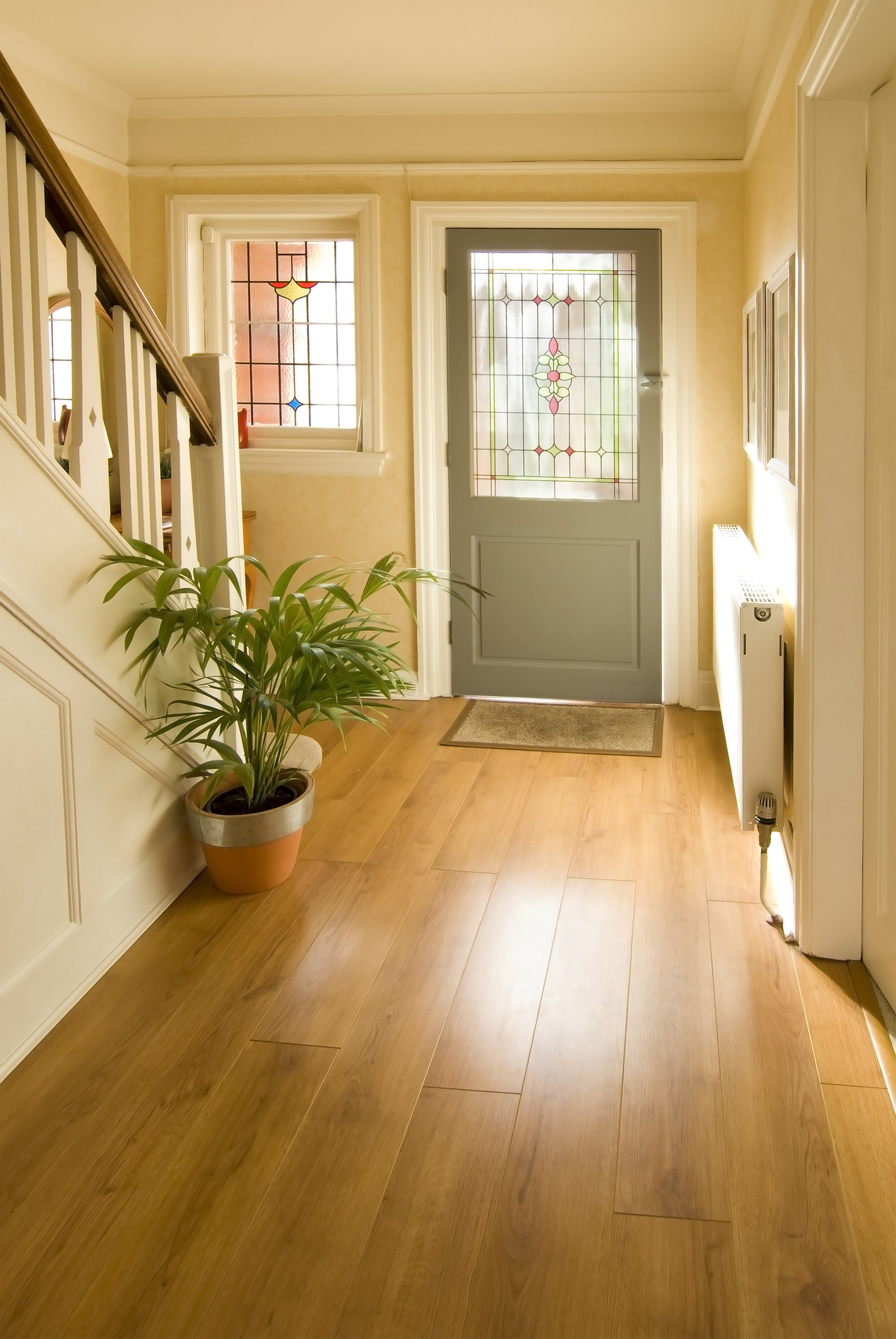The Comfort Series: Room-by-Room Rescue
Entry Way and Hallway
Entry Way and Hallway
Your hallway is your frontline. If outside air, dust, pollen or smoke from a neighbour’s cigarettes or fire pit sneaks in, it seeps into your whole home. Fix your entry and the rest of your home will be much easier to keep comfortable – in summer and winter.
The good news, you can fix your entry way fast!

60-Second Room Audit (do this now)
Daylight check (doors/windows)
Stand inside during the day and look closely around the sides, top and bottom of your front/back door. If you can see daylight, there’s a pathway for hot/cold air, dust, smell and noise year-round.
Why it matters: any light = a pressure leak. In summer it drags heat and dust in; in winter it bleeds warmth out (and lets in freezing cold air).
Dust trails on the sides/top of frames
Run a finger along the door stop and top frame. Fine dirt lines that re-appear after cleaning signal constant airflow.
Why it matters: those trails are “air highways”. Air movement = temperature loss and more dust and dirt to clean.

Noise/odours moving in
Run a finger along the door stop and top frame. Fine dirt lines that re-appear after cleaning signal constant airflow.
Why it matters: those trails are “air highways”. Air movement = temperature loss and more dust and dirt to clean.
Hairline gaps around architraves & skirting
Run a finger or a credit card edge where the architrave meets the wall and where skirting meets the floorboards. If it snags or you see a shadow line, you’ve got a gap.
Why it matters: tiny cracks act like air highways — they pull in dust, smells and cold air even after the door is sealed.
Sun path (glare/heat) — glass only
3pm summer glare test: If western sun hits the glass, stand in the entry way. Squinty eyes, hot patch or glass is hot to touch that’s solar gain driving the heat spike.
Why it matters: That heat is radiant, not a breeze — it spikes room temps fast and lingers after sunset. It creates a hot plume in the hallway that pushes warmth deeper into the house. Your AC works harder (higher bills) just to tame a daily sun blast.
Midday read test
Stand in the hall at 12pm, lights off. Can you read your phone at arm’s length?
Why it matters: If not, it’s under-lit. Eyes adjust slowly after bright outdoors — a dark hall feels unsafe and unwelcoming. Use a brighter, wider-spread light.
Fast Wins (2–5 mins)
-
- Open/close test: Door should swing smoothly and latch without force. Tighten hinge/strike screws if needed.
- Clear the swing path: Adjust mats/runners so the door skims, not scrapes.
- Dust-line baseline: Wipe the frame edges and floor line just inside the threshold.
- Trim-gap baseline: Trace around architrave + skirting joins with a card edge. Note any snags/shadow lines.
- Under-door gap + slope check:
- Measure at three points: hinge side, centre, latch side (to the nearest mm).
- Note the floor slope relative to the door swing: does the floor rise towards the door as it opens, or fall away, or is the floor flat? Call us if your floor is not flat and we will suggest a workable alternative.
Weekend Fixes (that actually work)
1) Seal the whole front door (best overall fix)
When to choose: You see daylight at the edges and/or under the door, or you get a whoosh, dust or smoke drifting in.
What it does: Creates a continuous barrier so outside air, smells and noise don’t sneak through gaps. Comfort stops yo-yoing.
Choose:
- Front & Back Door Kit — for two external timber doors (e.g., front + back). Includes an RP3 draught excluder.
- External Door Kit — for one external timber door. Includes an RP3.
- Why not door snakes? They don’t seal corners or tops. You’ll still leak.
2) Only the edges of the front door are leaking (sides + top)
When to choose: Bottom looks tight, but you can see light or dust around the sides/top.
What it does: Removes the whistle and edge leaks without touching the threshold.
Choose:
- Draught Dodgers for Doors – 1 Door Kit (sides + top only)
- Draught Dodgers for Doors – 2 Door Kit (sides + top only)
3) Only the bottom of the front door is leaking
When to choose: You can see light under the door, or you’re sweeping up leaves, grit and bugs inside.
What it does: Blocks floor-level draughts that chill feet and track in dust/smoke-laden air.
Choose:
4) Architraves & skirting gaps (silent draughts)
When to choose: You can see/feel hairline cracks where trims meet plaster or floorboards; dust lines keep forming along skirting even after cleaning; door sealing helped, but there’s still fine grit or whiffs of street smell.
What it does: Creates a continuous airtight trim seal, stopping sneaky airflow that bypasses your door fixes.
Choose:
- Ultraclear – if there are only a few smaller gaps
- Gap Filler Kit (Medium) – if there are a few narrow-ish gaps
- Gap Filler Kit (Large) – for wide or deep gaps
5) Entry glass of the front door is overheating (sidelights, full-light doors)
When to choose: Western summer sun is blinding the entry.
Two ways to do it:
- Option A — Renshade (quick, cheap, renter-friendly)
What it does: Reflects a good chunk of solar glare/heat before it gets inside.
Why pick it: Fast to fit, low cost, removable (great for renters/seasonal use).
Fit notes: Cut neatly and apply to the glass with velcro dots (supplied) most people use it just for the hot months.
Look: Functional/techy. - Option B — ecoGlaze with opaque acrylic (glare down, looks elevated)
What it does: Adds an opaque acrylic inner panel to cut glare and boost privacy; improves comfort but won’t reduce heat as much as Renshade.
Why pick it: Cleaner aesthetic and a permanent, neat finish; also adds impact resistance.
Fit notes: Works on existing timber windows and doors. Choose an opaque/opal acrylic for glare + privacy.
Look: Sleek/architectural.
Install tip: If heat is the main enemy, start with Renshade. If appearance + privacy are the priority (with some comfort gain), go ecoGlaze opaque.
6) Dark entry? Don’t cut a hole in the roof
What’s the problem we’re solving?
Your entry feels gloomy. The obvious idea is a skylight. But a skylight is a hole in your roof. That sounds dramatic because it is: you’re compromising your home’s thermal envelope (the layer that keeps outside air, heat and moisture out, and comfy air in).
Why skylights cause trouble (in simple terms):
- Heat in summer: Sun hits the skylight, the cavity gets hot, and that heat radiates straight down into your hall. Your AC works harder.
- Heat loss in winter: Warm air rises and heads for the easiest escape. A roof opening = easy escape. Your heater works harder.
- Moisture & leaks: Skylights need flashing and seals. Over time, seals age. Roof movement and storms happen. Water finds edges. (Ask anyone who’s had to bucket in their hallway or had to keep cleaning the inside of their skylight dome.)
- Bushfire season: The ember risk isn’t just “embers exist”. It’s that a skylight adds edges and gaps where embers can wedge underneath and smoulder. That’s a risk you don’t need to have.
- Hard to undo: Once you’ve cut the hole, you own the maintenance, the thermal penalty, and the risk. Reversing it is messy and expensive.
So what should you do instead?
Install a flat LED ceiling panel that gives you the same bright, daylight feel without touching the roof.
How the LED option solves it:
- Keeps the envelope intact: No roof penetration, no new places for water or embers to lodge.
- Comfort stays stable: No summer heat pouring in, no winter warmth escaping.
- Low energy, big light: Modern LEDs are efficient and fill the space evenly.
What you’ll feel (immediately)
- Smoother temperature at the entry — fewer big swings when the door opens.
- Less dust, street smell, and smoke from neighbours’ fires — those airflow highways are gone.
- Quieter entry + steadier bills — heater/AC isn’t fighting the front door.
- Cleaner floors — fewer dust lines along skirting once trims are sealed.
Budget & Time Snapshot
- Weekend upgrades:
- Doors: $–$$ · Beginner skill · ~45–90 mins per door (measure, cut, install)
- Renshade: $ · No special skill · ~20 mins (plus a coffee)
- Gap Filling: $ · No special skill · ~40 mins (plus a coffee)
- ecoGlaze: $$ · Beginner skill · ~1 hour per window
- LED Light: $$ · You’ll need a sparky (not DIY)
- Skills: Basic tools only. Clear video support is provided.
The ecoMaster team are always available to help.
Call 1300 326 627 or jump onto the chat function at www.ecoMasterStore.com.au

Pick Your Room
< Back to Room by Room Overview
-
- Entryway / Hall (you are here)
- Bedroom (coming soon)
- Lounge/Living (coming soon)
- Kitchen (coming soon)
- Study / Home Office / WFH (coming soon)
- Bathroom & Laundry (coming soon)

